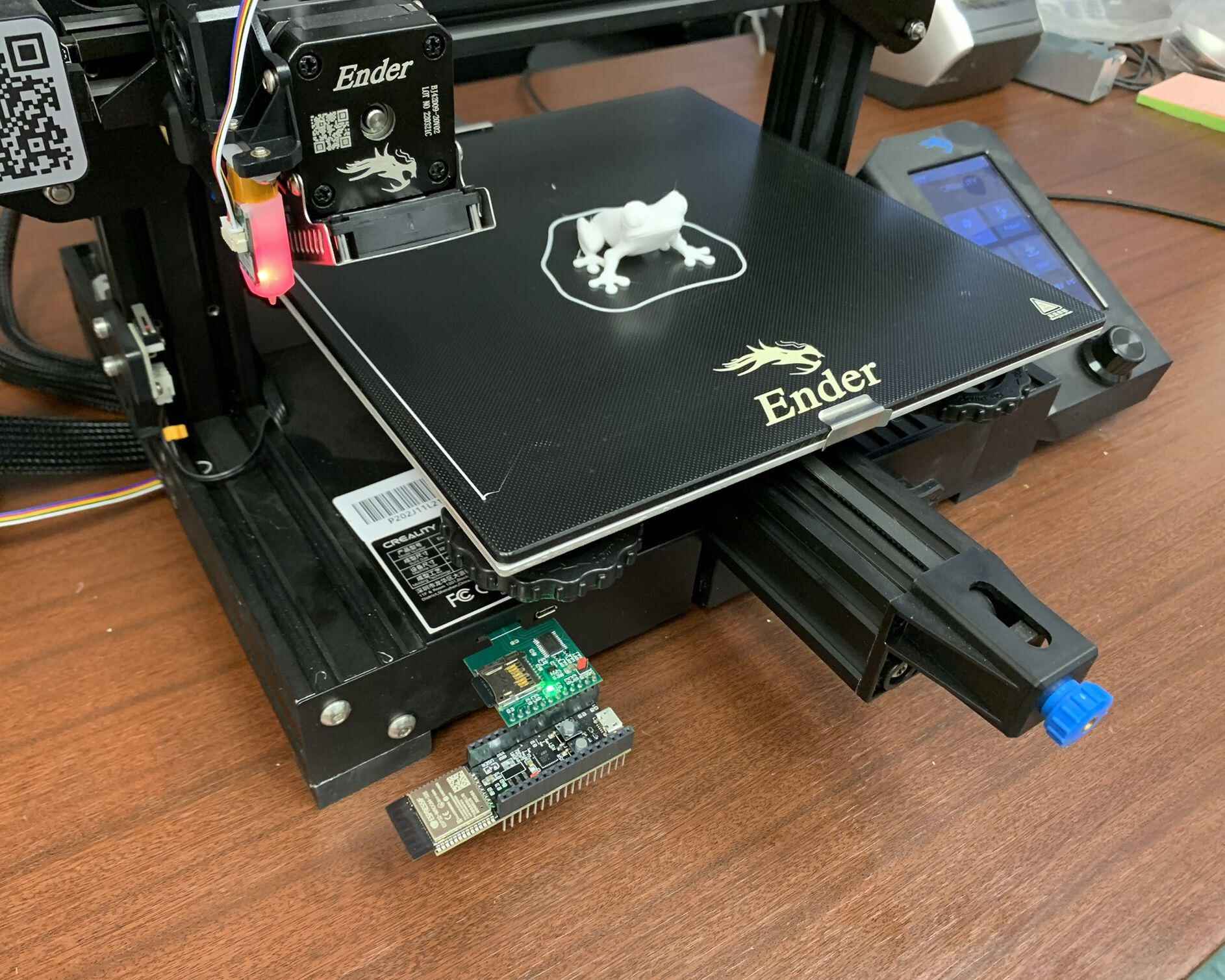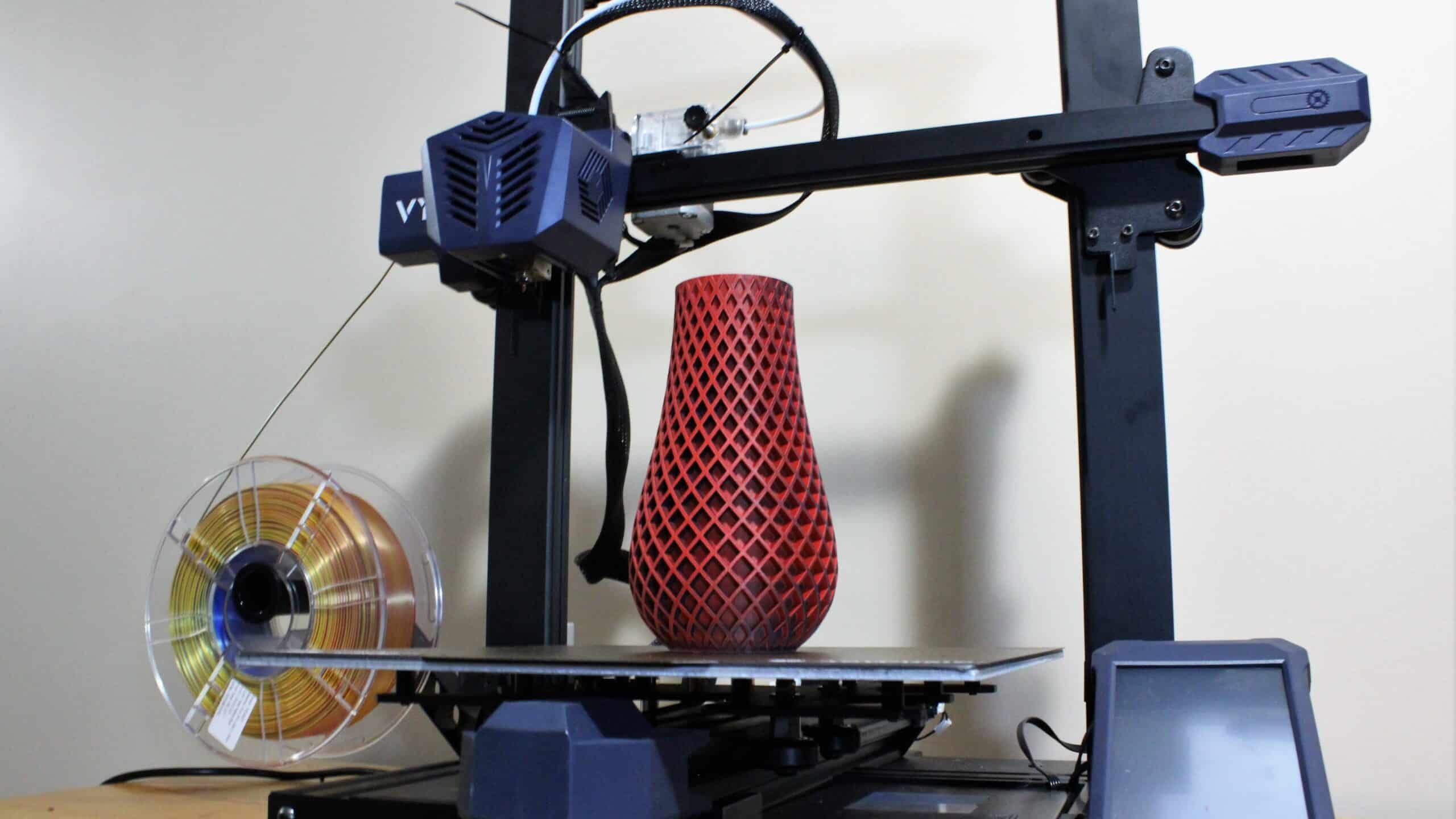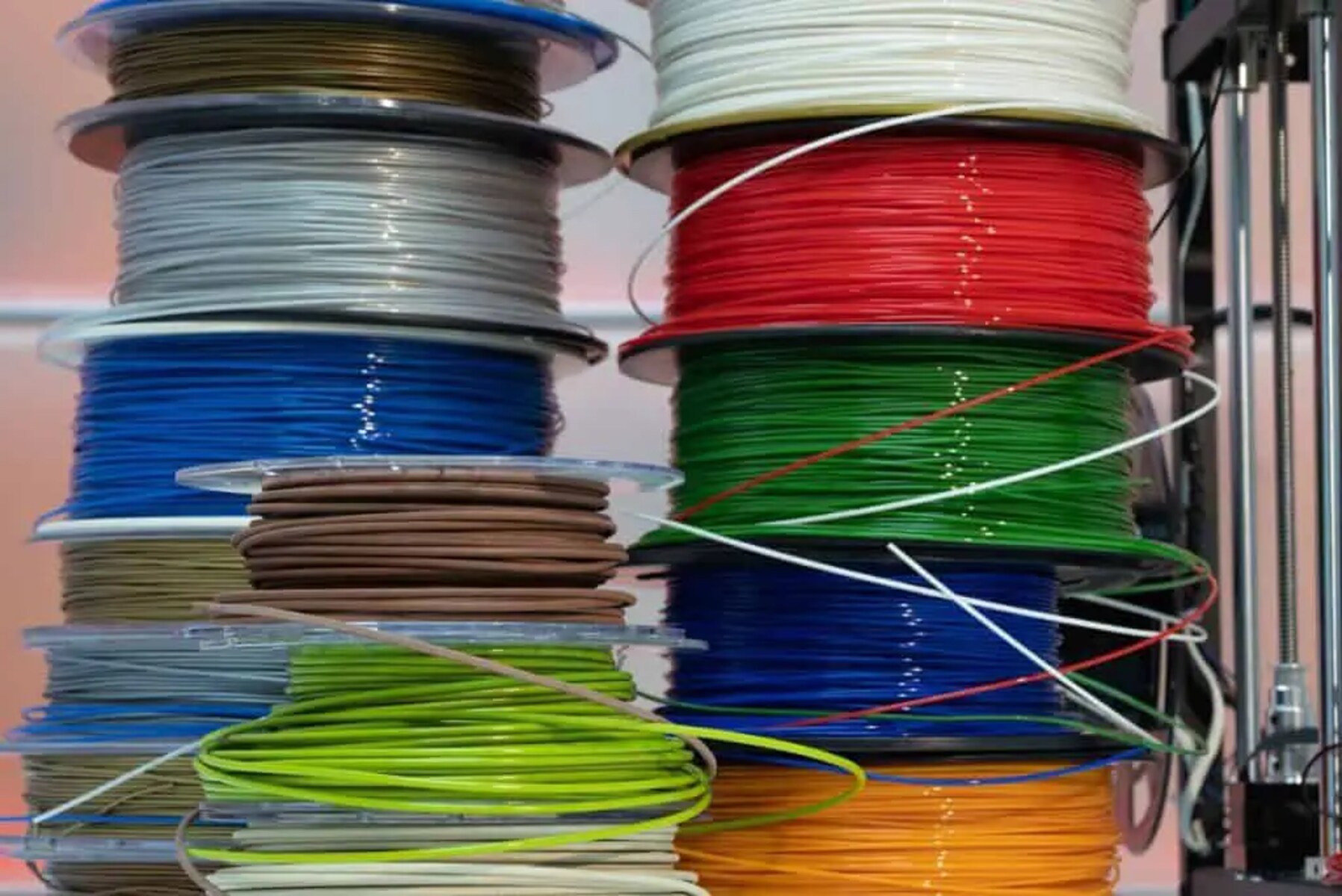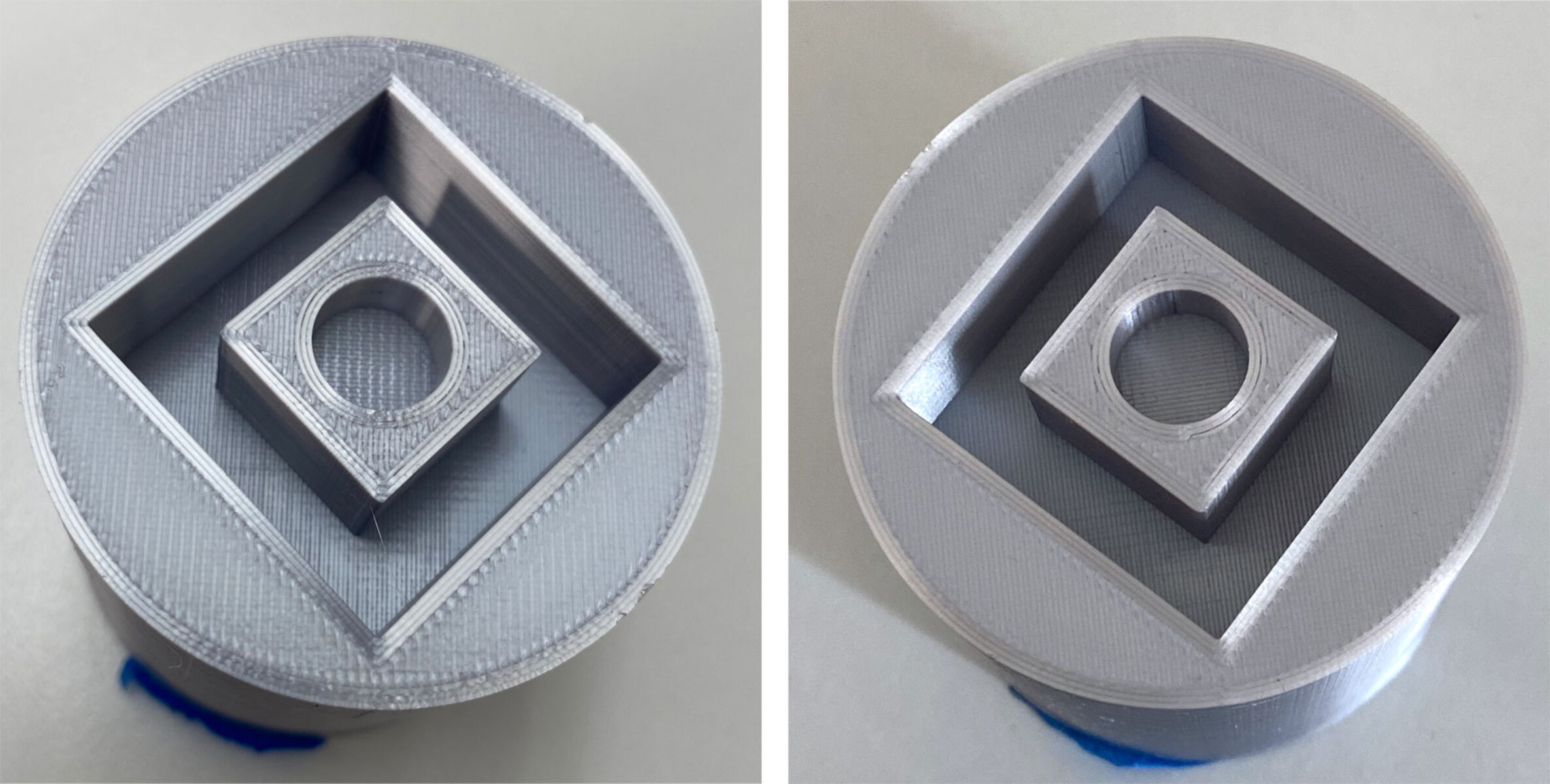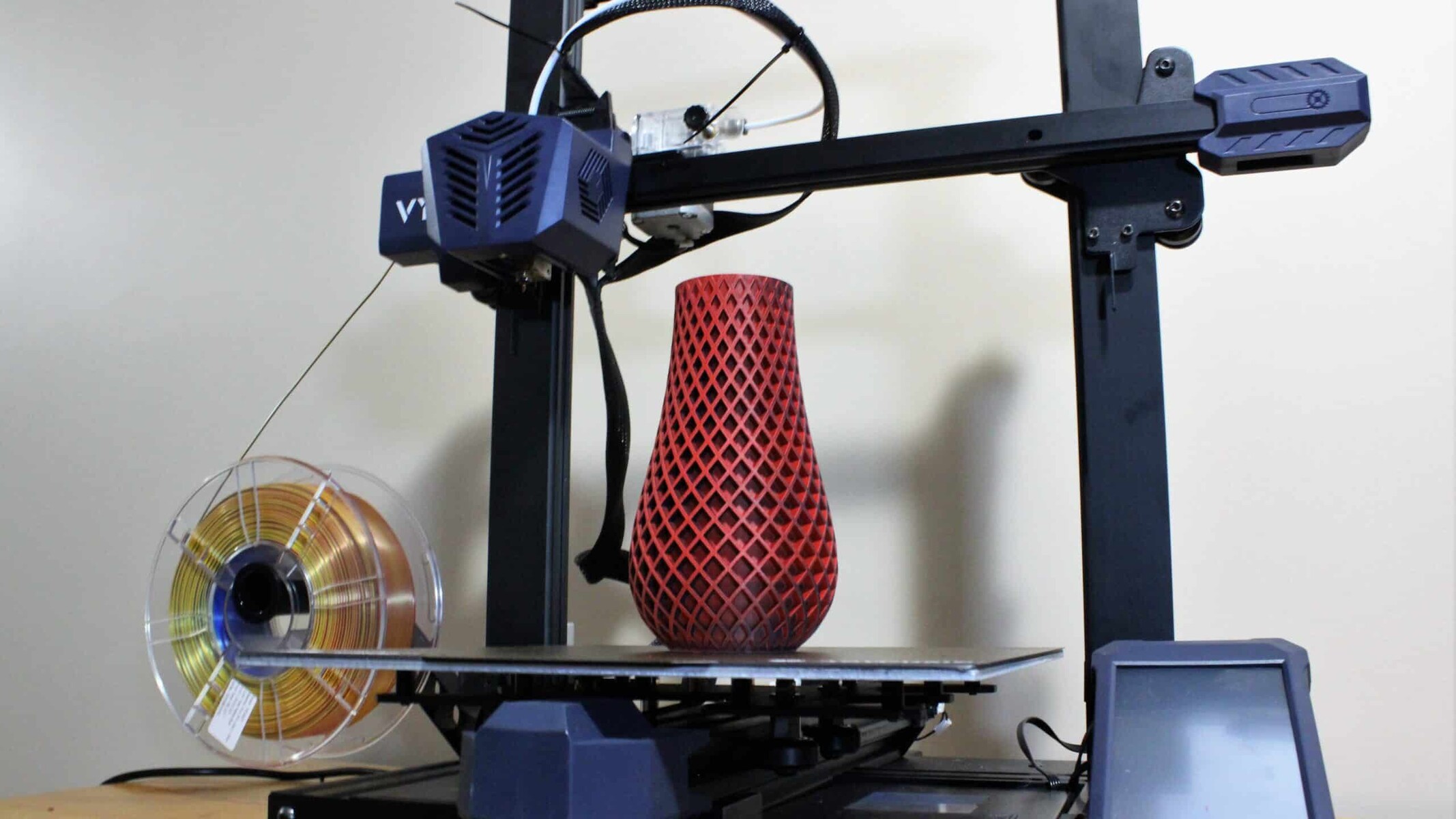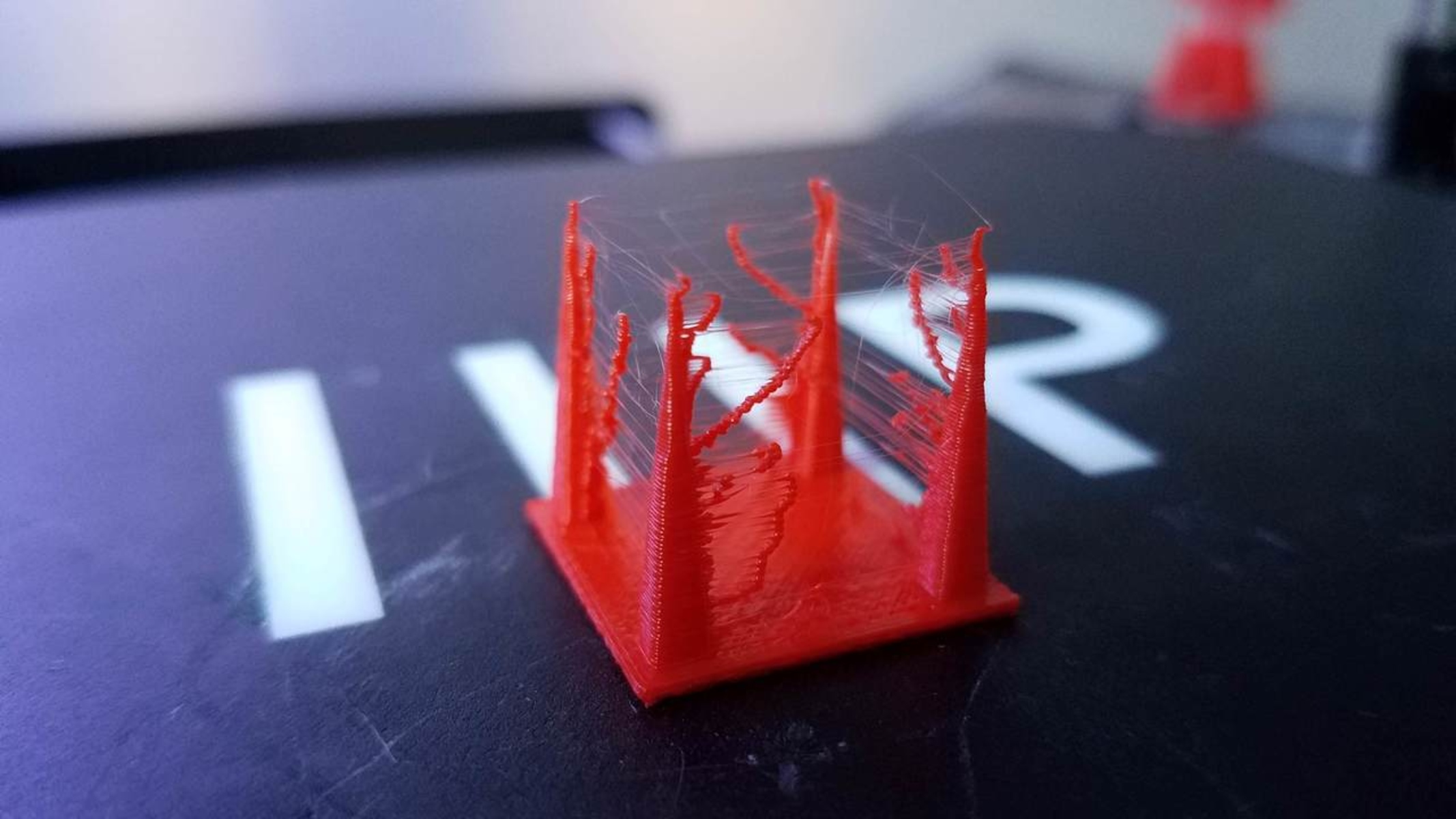Introduction
Welcome to the world of 3D printing, where imagination comes to life in the form of tangible objects. As a 3D printing service provider, one of the key challenges you may face is determining how much to charge for your services. Finding the right balance between your expertise, material costs, and market demand is crucial to ensuring the profitability and sustainability of your business.
Setting the right prices for your 3D printing services involves considering various factors and making informed decisions. This article will guide you through the process, providing insights into the key considerations and strategies to help you determine how much to charge for 3D printing.
Before we dive into the details, it is essential to note that there is no one-size-fits-all approach to pricing in the 3D printing world. Prices can vary significantly depending on factors such as geographical location, target market, and the specific niche you operate in. Therefore, it is crucial to consider the following factors when determining your pricing structure:
Factors to consider when setting your prices
When setting prices for your 3D printing services, it’s essential to take into account several key factors. These factors will help you ensure that your pricing structure is fair, competitive, and profitable. Here are some factors to consider:
- Time and labor costs: The amount of time and effort required to complete a 3D printing project is a crucial factor in determining your prices. Consider the complexity of the design, the printing time, post-processing tasks, and any additional services you provide.
- Material costs: The cost of materials is another important consideration. Different materials have different costs, so make sure to calculate the amount of material required for each project and factor in the associated costs. Keep in mind that some materials may be more expensive and may require special handling or post-processing.
- Overhead costs: Don’t forget to include your overhead costs in your pricing structure. This includes expenses such as equipment maintenance and depreciation, software licenses, electricity, rent, and other business-related expenses. These costs should be spread across your projects to ensure that you are covering them adequately.
- Complexity of the design: The complexity of the design plays a significant role in determining the pricing. Intricate or more detailed designs may require more time, effort, and material, which should be reflected in your pricing.
- Market demand and competition: It’s important to consider the market demand and the level of competition in your area or niche. If there is high demand for 3D printing services or intense competition, you may need to adjust your prices accordingly to attract customers and remain competitive.
By carefully considering these factors, you can develop a pricing structure that accounts for your costs, ensures profitability, and meets the needs and expectations of your target market. It’s important to strike a balance between affordability for your customers and sustainability for your business.
Time and labor costs
One of the significant factors to consider when setting prices for your 3D printing services is the time and labor costs involved in completing each project. The amount of time and effort required can vary depending on factors such as the complexity of the design, the size of the object, and the printing technology used.
When calculating time and labor costs, it’s important to consider not only the printing time but also the pre-processing and post-processing tasks. Pre-processing tasks may include tasks like file preparation, model resizing, and support material generation. Post-processing tasks may involve removing support structures, sanding, polishing, or painting the printed object.
Additionally, if you provide design services or customizations, you should also account for the time spent communicating with the client, understanding their requirements, and making any necessary modifications to the design. These additional labor costs should be factored into your pricing structure.
It’s essential to accurately estimate how long each project will take from start to finish. This can be done by analyzing previous projects and considering your own experience and expertise. Keep in mind that the printing time can be affected by factors such as layer height, infill density, and print quality settings.
Furthermore, consider the level of skill and expertise required for the project. More complex designs may require specialized knowledge or additional time for troubleshooting and calibration. It’s important to charge accordingly for the amount of time and skill invested in each project.
Keep in mind that offering expedited or rush services may incur an additional charge to compensate for the priority and quick turnaround time required. This can be a valuable option for customers who need their prints urgently but should reflect the additional time and effort required on your end.
By accurately assessing and factoring in the time and labor costs for each project, you can ensure that your pricing is fair and reflective of the value you provide to your clients. This will help you maintain profitability and deliver high-quality 3D printing services.
Material costs
Material costs are a crucial factor to consider when setting prices for your 3D printing services. The type and amount of material used for each project can significantly impact your overall costs and should be reflected in your pricing structure.
When determining material costs, it’s important to consider the specific material being used. Different materials, such as ABS, PLA, or PETG, have varying price points and may have different requirements for printing, post-processing, and finishing.
In addition to the cost per kilogram or liter of the material, you should also take into account the amount of material consumed per project. This can be estimated based on factors such as the volume of the object, the infill density chosen, and the desired print quality. It’s important to calculate the material usage accurately to avoid undercharging for the material costs.
Some projects may require unique or specialty materials that come at a higher cost. For instance, if a customer requests a print using a high-performance material like carbon fiber or metal-infused filament, the price should account for the additional expense of these materials.
It’s also common practice to include a material wastage factor in your calculations. This accounts for any material that is lost during the printing process, such as support material or any scrapped prints due to errors or imperfections.
Consider the cost of storage and handling of different materials. Some materials require special storage conditions, such as controlled humidity or temperature, which can incur additional costs. It’s crucial to account for these additional expenses in your pricing structure.
Lastly, keep in mind that material costs can vary depending on the source or supplier. It’s important to regularly review and update your material costs to reflect any changes in prices or availability.
By accurately estimating your material costs and incorporating them into your pricing structure, you can ensure that you are covering your expenses and maintaining a profitable balance between the quality of materials used and the affordability for your clients.
Overhead costs
When setting prices for your 3D printing services, it’s crucial to consider your overhead costs. These costs include various expenses that are necessary to keep your business running smoothly, but may not be directly tied to a specific project or client.
Examples of overhead costs in the context of 3D printing services can include:
- Rent or mortgage payments for your workspace or studio.
- Electricity, heating, and cooling expenses.
- Insurance premiums to protect your equipment, materials, and liability.
- Software licenses for design, slicing, or other 3D printing-related software.
- Equipment maintenance and repairs.
- Administrative costs, such as phone bills, internet service, and office supplies.
- Marketing and advertising expenses to promote your services and reach potential customers.
- Professional memberships or ongoing education to stay up-to-date with the latest industry trends and techniques.
These costs are essential for the smooth operation and sustainability of your business. However, they should not be overlooked when setting your prices. By incorporating your overhead costs into your pricing structure, you can ensure that you are covering these expenses and maintaining a profitable margin.
One common approach is to calculate an hourly rate that includes a portion of your overhead costs. This allows you to allocate a portion of your expenses to each project based on the time spent on that project. Alternatively, you may choose to include a percentage markup on your material and labor costs, which can help cover your overhead expenses.
It’s important to regularly review and analyze your overhead costs to ensure that your pricing structure remains accurate and sustainable. As your business grows, these costs may change, so it’s important to adjust your prices accordingly.
By properly accounting for your overhead costs in your pricing structure, you can ensure that your business remains financially viable and can continue to provide high-quality 3D printing services to your clients.
Complexity of the design
The complexity of the design is a significant factor when determining the pricing for your 3D printing services. Complex designs often require additional time, effort, and expertise to successfully print and post-process, which should be reflected in your pricing structure.
When evaluating the complexity of a design, consider factors such as the level of detail, intricacy of geometry, and the presence of overhangs or complex support structures. Designs with fine details or intricate shapes may require slower print speeds or higher resolutions, leading to longer printing times and additional material usage.
Some designs may also require more extensive post-processing or finishing. For example, smoothing rough surfaces, removing support structures, or intricate painting can take a significant amount of time and skill. It’s important to account for these additional tasks when setting your prices.
Complex designs can also pose technical challenges and potential risks. With intricate geometries or delicate structures, the likelihood of failed prints or the need for multiple iterations increases. These factors should be considered when calculating the costs and potential risks associated with complex designs.
Additionally, the level of expertise and experience required to successfully print complex designs should be considered. More intricate designs may demand specialized knowledge and skills to handle potential issues such as warping, print errors, or the need for manual supports. The time and expertise invested in handling complex designs should be factored into your pricing structure.
It’s important to have a clear understanding of the complexity of each design and how it may impact the overall printing and post-processing process. Discussing the design requirements with your client beforehand can help you assess the level of complexity and provide a more accurate pricing estimate.
By accounting for the complexity of the design in your pricing structure, you are ensuring that you are adequately compensated for the additional time, effort, and expertise required. This approach helps to maintain profitability while delivering high-quality 3D printing services to your clients.
Market demand and competition
When determining your prices for 3D printing services, it’s crucial to consider the market demand and the level of competition in your area or specific niche. Understanding these factors will help you position your pricing structure appropriately to attract customers and remain competitive.
Start by researching the market demand for 3D printing services in your target location or industry. Assess the level of interest and adoption of 3D printing among potential customers. Are there specific industries or sectors that have a higher demand for 3D printing? Understanding the market demand will help you gauge the potential volume of customers and their willingness to pay for your services.
Next, analyze the competition in your market. Identify other 3D printing service providers in your area or niche and understand their pricing models. Are they offering similar services at a similar price range? How do your services and value proposition compare to theirs? This analysis will help you position your pricing to differentiate your offerings and attract customers based on competitive factors other than price alone.
Consider the unique selling points or value-added services you offer that set you apart from competitors. This could include factors such as faster turnaround times, higher-quality prints, exceptional customer service, or specialization in a specific industry or application. Positioning yourself as a premium provider may allow you to charge higher prices if there is a demand for your specialized expertise and offerings.
It’s important to strike a balance between market demand and competition. If the market is highly competitive with many players offering similar services, you may need to adjust your prices to remain competitive. However, undercutting prices too much may lead to lower profit margins and potential challenges in providing high-quality services.
On the other hand, if you’re operating in a niche market with few competitors and high demand, you may have more flexibility to set higher prices. This could be justified by the uniqueness of your offerings and the scarcity of alternative options for customers.
Regularly assess the market demand and competition landscape. Keep an eye on industry trends, emerging technologies, and changes in customer preferences. Adjust your pricing structure accordingly to remain competitive and capture new opportunities in the market.
By considering the market demand and competition, you can price your 3D printing services strategically to attract customers while ensuring profitability and sustainability for your business.
Pricing strategies
Choosing the right pricing strategy is essential for effectively positioning your 3D printing services in the market. Different pricing strategies can be employed depending on your business goals, target market, competition, and the perception of value associated with your services. Here are some common pricing strategies to consider:
- Cost-based pricing: This strategy involves calculating your costs, such as material, labor, and overhead, and adding a desired profit margin. It provides a straightforward approach to pricing, ensuring that your expenses are covered and profit is generated.
- Competitive pricing: With this strategy, you analyze the prices of your competitors and aim to set your prices at a similar level. This approach can help you remain competitive in the market, but it’s important to consider the unique value you offer to differentiate yourself from the competition.
- Value-based pricing: This strategy focuses on the perceived value of your services to the customer. Consider the benefits your 3D printing services provide, including quality, customization, speed, and expertise. Price your services based on the value that customers perceive, rather than solely on the costs involved.
- Dynamic pricing: With this strategy, your prices fluctuate based on demand, seasonality, or other market factors. For example, you may charge higher prices during peak periods when demand is high and reduce prices during slower periods to attract more customers.
- Bundling: By bundling multiple services or products together, you can offer customers a package at a discounted price compared to purchasing each item individually. This strategy can encourage customers to choose your services over competitors and increase overall sales.
- Promotional pricing: Temporary price reductions or special discounts can be used as a promotional strategy to attract new customers or encourage repeat business. This strategy can be effective for generating initial interest and building customer loyalty.
It’s important to revisit and evaluate your pricing strategy regularly. As your business evolves, market conditions change, or you introduce new services, your pricing strategy may need adjustments. Monitor customer feedback, analyze sales data, and gather insights from market research to refine your pricing and stay competitive.
Remember, pricing is not a one-size-fits-all approach. It’s essential to consider your unique business factors and the value you provide to customers. By selecting the right pricing strategy and implementing it effectively, you can ensure that your 3D printing services are positioned competitively in the market and meet both customer expectations and your profitability goals.
Hourly rate vs. fixed price
When determining how to structure your pricing for 3D printing services, one important decision to make is whether to charge an hourly rate or a fixed price for each project. Both approaches have their advantages and considerations that should be taken into account. Let’s explore the differences between these two pricing models.
Hourly rate: Charging an hourly rate involves calculating the amount of time spent on each project and billing the client accordingly. This pricing model offers transparency and allows you to be compensated for the actual time and effort invested in each project. It is particularly useful for projects with varying complexities or customization requirements.
However, using an hourly rate may require accurate time tracking and a clear breakdown of tasks. It’s important to communicate with the client upfront about the estimated number of hours needed for the project and any additional costs that may arise during the process.
If you choose to charge an hourly rate, you should consider factors such as the time spent on 3D modeling and preparation, printing, post-processing, and communication with the client. It’s also important to account for any unexpected challenges or troubleshooting that may arise during the printing process.
Fixed price: Alternatively, you can opt for a fixed price model, where you provide clients with a predetermined price for their project regardless of the actual time spent. This approach offers simplicity and can be attractive to customers who prefer knowing the total cost upfront.
With a fixed price model, it’s essential to accurately estimate the time required for each project and set a price that is fair to both you and the client. Careful consideration of factors such as complexity, material costs, and labor can help you determine an appropriate fixed price for each project.
It’s worth noting that unexpected obstacles or additional requests from the client may arise during the project, which could result in additional costs. Ensure that your fixed price accounts for any foreseeable contingencies or discuss the possibility of additional fees for any changes or revisions beyond the initial scope of the project.
Ultimately, the decision between hourly rate pricing and fixed pricing depends on your business model, the expectations of your clients, and the nature of the projects you undertake. Some businesses may even use a combination of both approaches, charging an hourly rate for certain tasks and providing fixed prices for other aspects of the project.
Whichever pricing model you choose, clearly communicate the terms with your clients to avoid any misunderstandings. Be transparent about what is included in the price and any potential additional charges that may apply.
Regularly evaluate and analyze your pricing structure to ensure that it aligns with your business goals, covers your costs, and meets your clients’ expectations. Adjustments may be necessary as your business evolves and the market conditions change.
By carefully considering the pros and cons of both hourly rate and fixed price models and selecting the most suitable approach for your business, you can establish a fair and sustainable pricing strategy for your 3D printing services.
How to calculate your prices
Calculating your prices for 3D printing services involves considering various factors to ensure that your pricing structure is fair, competitive, and profitable. Here are some steps to help you determine how to calculate your prices:
- Identify your costs: Start by identifying all the costs associated with each project. This includes material costs, labor costs (including design work and post-processing), and overhead costs such as rent, utilities, and equipment maintenance.
- Calculate your labor costs: Determine the amount of time it takes to complete each task involved in a project, including design, file preparation, printing, and post-processing. Multiply the hours spent on each task by your desired hourly rate to calculate the labor costs.
- Estimate your material costs: Calculate the amount of material required for each project based on factors like the volume of the object, infill density, and desired print quality. Multiply the material usage by the cost per kilogram or liter to estimate the material costs.
- Add your overhead costs: Incorporate your overhead costs into the pricing structure by allocating a portion of these expenses to each project. This can be done by applying a percentage markup on your material and labor costs or by adding a flat fee to each project to cover the overhead expenses.
- Consider the complexity and expertise: Evaluate the complexity of the design, the level of expertise required, and any additional services or customization you provide. Factor in the additional time, effort, and skill involved when calculating the overall costs.
- Assess market demand and competition: Research the market demand for 3D printing services in your target area or niche. Analyze the pricing models of your competitors and consider the unique value you offer to differentiate yourself from the competition. Adjust your prices accordingly to ensure they are competitive yet profitable.
- Regularly revise and analyze: Monitor and analyze your pricing structure on an ongoing basis. Review your costs, market conditions, customer feedback, and competitors’ pricing. Adjust your prices if necessary to ensure that they remain fair, sustainable, and aligned with your business goals.
Remember, finding the right balance between affordability for your customers and profitability for your business is key. By carefully calculating your prices based on your costs, market demand, and the value you provide, you can establish competitive pricing for your 3D printing services.
Examples of 3D printing pricing models
When it comes to pricing 3D printing services, there are various models that you can consider implementing. These pricing models can provide flexibility, accommodate different client needs, and enable you to maximize your profitability. Here are a few examples of popular 3D printing pricing models:
- Per hour printing: With this model, you charge clients based on the number of hours it takes to complete their print. This pricing structure works well for projects with varying complexities and allows you to account for factors such as design time, printing time, and post-processing. You can set an hourly rate that covers your costs and add any additional material expenses if necessary.
- Per cubic centimeter/inch: This model involves charging clients based on the volume of material used for their print. By specifying a rate per cubic centimeter or cubic inch, you can provide clients with an estimate upfront or calculate the final price based on the actual volume of material consumed. This pricing model can be useful for transparently aligning costs with the amount of material used for each project.
- Tiered pricing: Implementing tiered pricing allows you to offer different pricing levels based on project complexities or service tiers. For example, you could have a basic package that includes standard printing, a mid-tier package with additional customization options, and a premium package that includes high-level finishing and expedited service. By offering different tiers, you can cater to varying client needs and budgets while increasing your revenue potential.
- Subscription-based pricing: For clients with ongoing or recurring printing needs, a subscription model can be advantageous. You can offer monthly or annual subscriptions tailored to different usage levels or service packages. This provides clients with predictable costs and encourages them to continue working with you, while ensuring a steady stream of revenue for your business.
- Project-based pricing: With project-based pricing, you determine a fixed price for each individual project based on its unique requirements, complexity, and expected time commitment. This approach provides clients with a clear price upfront and allows you to factor in all the necessary costs involved. It is especially useful for well-defined projects with specific deliverables and timelines.
When deciding on a pricing model, consider factors such as the complexity and variability of your projects, the preferences and expectations of your target market, and your business goals. It’s also important to stay updated on industry trends and continuously evaluate and refine your pricing models to ensure they remain competitive and profitable.
Remember that these examples are just starting points, and you can customize and adapt them to suit your specific business needs. The key is to choose a pricing model that aligns with your value proposition, caters to your target market, and allows you to run a sustainable and successful 3D printing service.
Conclusion
Setting the right prices for your 3D printing services is a critical aspect of running a successful business. By carefully considering factors such as time and labor costs, material costs, overhead expenses, complexity of the design, market demand, and competition, you can establish a pricing structure that is fair, competitive, and profitable.
Calculating your prices accurately involves analyzing your costs, estimating time and material usage, factoring in overhead expenses, and considering the complexity and expertise required for each project. By incorporating these elements into your pricing, you ensure that you are covering your expenses while delivering value to your clients.
Choosing the right pricing strategy, whether it’s cost-based, competitive, value-based, or a combination of approaches, requires a deep understanding of your market, competition, and the unique value you offer. Regularly reviewing and adjusting your pricing structure will help you remain competitive and meet the evolving needs of your clients.
Furthermore, exploring different pricing models, such as hourly rates, fixed prices, tiered pricing, subscription-based pricing, or project-based pricing, allows you to tailor your prices to different client preferences and project requirements. This flexibility can contribute to the success of your business and attract a diverse range of customers.
Remember, finding the right balance between affordability for your customers and profitability for your business is essential. Regularly analyzing market conditions, monitoring industry trends, and adjusting your prices accordingly will help you stay competitive and achieve sustainable growth.
By carefully considering all these factors, implementing appropriate pricing models, and regularly evaluating your pricing structure, you can ensure that your 3D printing services are priced appropriately to meet your financial goals, exceed customer expectations, and enhance the success of your business.









